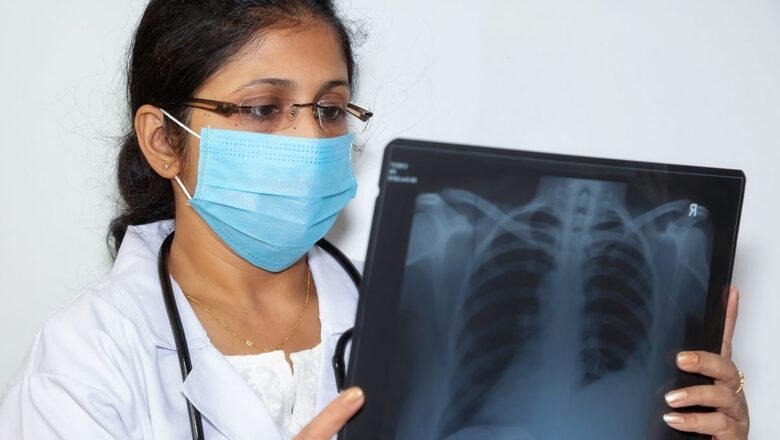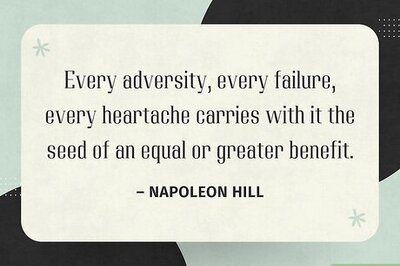
views
Are you frequently caught in lengthy lines for your ultrasound, MRI, or CT scans? The waiting time for receiving the comprehensive reports can be quite extensive as well.
You can lay the blame at the scarcity of radiologists throughout India — a phenomenon that can be ascribed to multiple factors, ranging from a shortage of training facilities to limited medical seats, increased attrition rates, heavy workloads, burnout and more.
Radiologists are doctors who specialise in the diagnosis and treatment of injuries and medical conditions by employing various medical-imaging techniques, including X-rays, computed tomography (CT), magnetic resonance imaging (MRI), nuclear medicine, positron emission tomography (PET), and ultrasound.
They play an important role in the healthcare system as they are responsible for interpreting medical images such as X-rays, CT scans, MRIs, and ultrasounds. Their expertise is crucial for accurate diagnoses and treatment planning.
Data shows that in India, there is only one radiologist for every one lakh patients — far below the global standards. Doctors estimate it as just one radiologist available for every 100 scans performed each day.
The shortage of radiologists is exacerbated by the continued increase in both the volume of scans conducted and the number of images per scan, driven by advanced high-resolution imaging techniques, particularly in CT and MRI.
This shortage affects patient care and jeopardises the efficiency and quality of diagnostic services.
“With just approximately 20,000 radiologists serving a population of over 1.4 billion, we are confronted with an alarming ratio of one radiologist for every 1,00,000 individuals, far below global healthcare standards,” Dr Jagadish Hiremath, chairman of Bengaluru-based Aasra Hospitals, said.
In some places in India, it’s an issue of access and availability of radiologists while in bigger hospitals, it is about burnout and delayed reporting time.
“There is no doubt that we need more radiologists who are well-trained. There is a shortage in Tier 2 and 3 cities and there are none in rural areas. So the distribution is quite asymmetric…,” Harsh Mahajan, founder and chief radiologist at Mahajan Imaging and Labs, said.
Why the Shortage?
Dr Abhishek Bansal, head, interventional radiology, Sri Balaji Action Medical Institute and Action Cancer Hospital in New Delhi, believes that radiology is the “backbone of healthcare” which is essential for disease prevention and treatment.
The shortage is primarily due to the mismatch between the number of training opportunities for radiology and the doctors wanting to pursue radiology as it’s the “most sought-after field of medicine for many years now”.
“The top rankers across the country are the ones who get to pursue radiology amongst other specialities,” he added.
However, there are multiple factors influencing the equilibrium between demand and supply.
First, as per industry experts, is the inadequate number of medical institutions providing radiology training programmes. “The ratio of radiology seats to all clinical seats combined, the number of radiologists to clinical seats is an average of about 1:15 (which means one radiology seat for every 15 clinical seats),” Bipin Batra, former executive director of India’s apex examination body, National Board of Examinations — which also conducts NEET-PG — said.
“From here itself, we can gauge the trend of shortage as India would need one radiologist for every 4-5 clinicians,” Batra, who himself is a radiologist, said.
Also, many radiologists leave the country for better opportunities abroad due to factors like higher salaries and improved working conditions
Another factor is the extreme workload. “The workload on radiologists in India is overwhelming, with long working hours and limited support staff, leading to burnout and decreased job satisfaction,” Dr Narayanaswamy, founder and medical director at Bengaluru-based Athreya Hospital, said.
“Burnout is also a major issue which is a fallout of the excessive workload due to the shortage of radiologists in the profession.”
How to solve the shortage?
To address this shortage, according to experts, India must adopt a multifaceted approach involving increased training opportunities, improved working conditions and integration of advanced technology.
Hiremath from Aasra Hospitals believes that this could be solved by fostering training programmes, fellowships, and exchange initiatives to cultivate a skilled radiology workforce.
Also, he said that “tele-radiology can overcome geographical barriers, extending radiology expertise to remote areas. The way forward demands a united effort to ensure accessible and quality diagnostic services for all”.
Dr Arjun Kalyanpur, chief executive officer at Telerad Group, explained further the concept of tele-radiology.
“According to the data by WHO, in Africa, there is no radiologist at all. Fortunately, there are technology solutions available in the form of tele-radiology which allows for the images to be transmitted from the hospital to the location of the radiologist.”
He suggested that tele-radiology can provide services to areas where radiologists are not available, such as remote parts of the northeast, and explained how his company has been able to deliver reporting services to government health centres in Tripura via the technology.
“From the radiologist’s perspective, tele-radiology workflow allows them to be more productive and efficient in reporting scans, as well as achieve greater work-life balance while providing quality patient care.”
To address the current demands, experts also suggest that existing regulations should be updated.
“The government, especially the Atomic Energy Regulatory Board (AERB), should be more flexible and should revise certain old and outdated regulations that hamper the growth of the field of radiology,” advised Bansal from the interventional radiology department of Sri Balaji Action Medical Institute and Action Cancer Hospital.
Dr Raghunandan Prasad, a senior consultant and professor at Amrita Hospital in Faridabad, is optimistic that the establishment of several new AIIMS and medical colleges will significantly increase the available seats.
“The effects of these measures are now instilling optimism in the realm of radiology. This problem may find a solution in the years to come.”
The AI revolution?
According to experts, Artificial Intelligence (AI) holds immense potential to revolutionise radiology.
AI can interpret X-rays, transmit reports, and cross-reference patient diagnoses with similar cases, providing a tool to assist radiologists.
“It is expected that in the coming years, AI in imaging will help make radiologists more productive, more accurate and lead to reduction of turnaround time,” Mahajan said, adding: “We also work in the field of AI and have a start-up called CARPL.ai.”
According to Amit Gandhi, chief business officer, Deeptek.ai, the shortage is not limited to developing countries but also impacts developed countries such as the UK, Japan, and Singapore.
Gandhi claims that “the world will never have enough radiologists”.
Experts told News18 that embracing Artificial Intelligence and machine learning in radiology can enhance the capabilities of radiologists, enabling quicker and more accurate diagnoses.
Bansal, a radiologist, believes that AI can take the world of radiology to every doorstep of our country and even compensate for the shortage of healthcare professionals to a certain extent.
“Public-private partnerships and AI offer a solution for up-skilling medical professionals. The synergy between trained radiographers, radiologists and AI accuracy creates an ecosystem that bridges the healthcare delivery gap.”
Dr Vikas Rastogi, who serves as the director of interventional radiology at Dharamshila Narayana Superspeciality Hospital, suggests that there’s a need in India to improve the training and skills of paramedics to effectively operate modern radiology equipment.
For example, handling digital X-rays requires a bit more training for accuracy.
“To bridge the gap, along with a large number of qualified and certified fresh intakes from academic institutions, the immediate task is to train the available paramedics to equip them with complete know-how of radiology.”
According to Kalyan Sivasailam, CEO of 5C Network— a tekeradiology provider, AI-powered digital diagnostic platforms may change the landscape of healthcare in India.
“Healthcare industry must embrace these innovations to support radiologists, alleviate patient suffering, and ensure timely, high-quality healthcare delivery.”


















Comments
0 comment